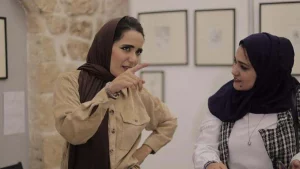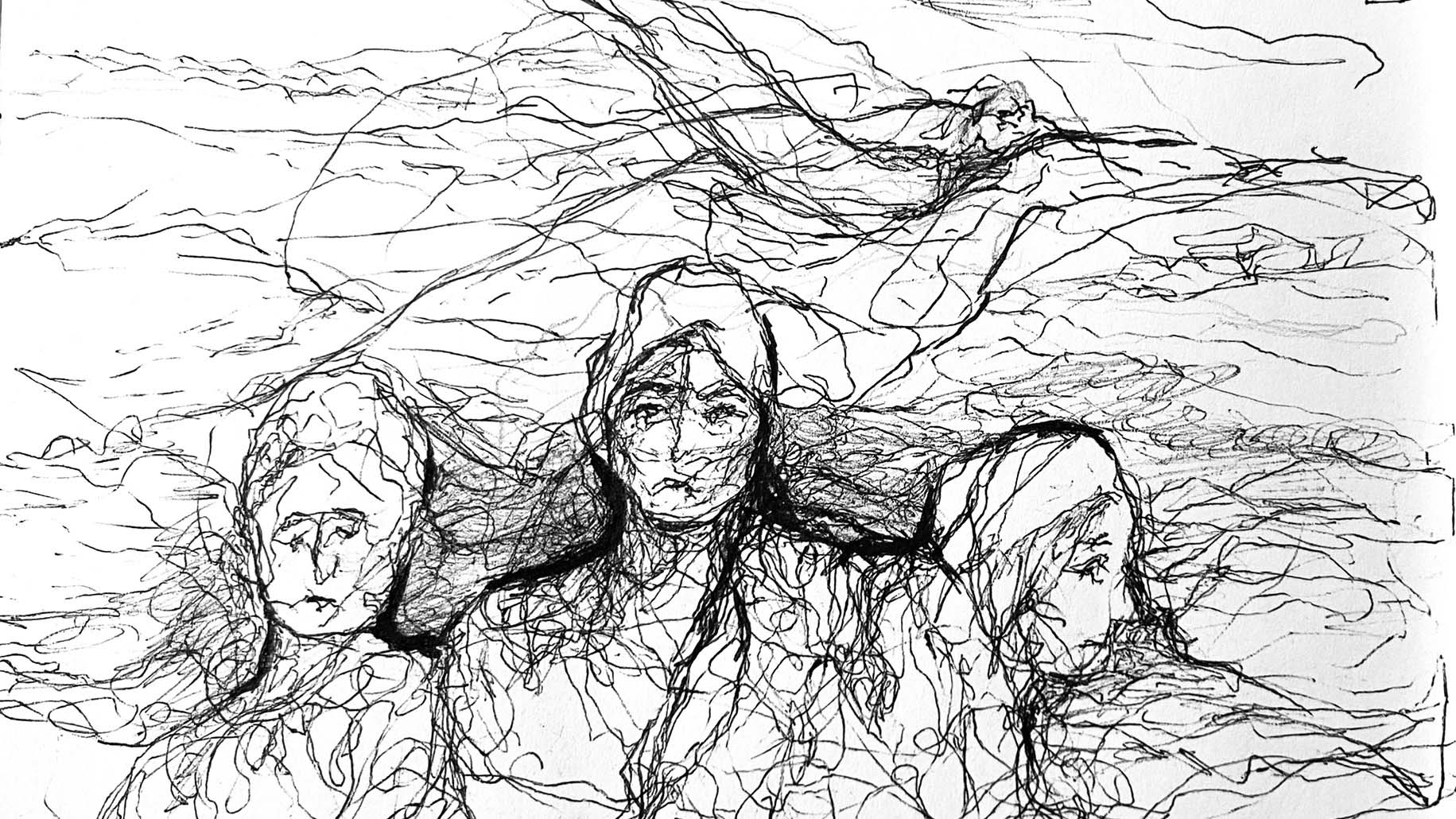“I tried to imagine what each martyr would have been doing if his or her life was not snatched away from them,” the Gaza native told Middle East Eye.
“If someone had a small tree they were taking care of, if they were sleeping or looking out the window, I imagined all that.”
With a sketchbook that she kept with her during and in the aftermath of Israel’s military campaign on the besieged Gaza Strip, Batniji drew 50 sketches of victims whose names and ages she had heard on the television.
The 31-year-old artist said she was “crying sketches,” as drawing was the only way to “escape [horrible] news” and keep her from collapsing.
“During the war, you lose your stability, your feelings, and your humanity. This is their goal with these continuous attacks, to make you lose yourself. Maybe that’s why I drew the sketches in black, which is something I did not plan for, they just came like that,” Batniji said.
“There was something that was crushing me inside, a voice that I could never get rid of. I turned that voice into lines, and in some cases I didn’t even know what I was drawing until I found out that I drew these faces.”
Imagined faces
As Israeli shelling intensified during the 11-day campaign, Batniji’s married siblings, her nieces and nephews all sought refuge in the family’s house.
With everyone sheltering in one room in the basement, Batniji took occasional breaks from the chaos surrounding her by spending time in the small atelier in the home’s front yard.
She shared her first sketch on her Facebook page on the fourth day of the military operation. Titled The Night Scene, the illustration depicts her family during the attacks.
“I kept thinking about the scene when my nieces and nephews hid from the bombing in their mothers’ arms. It was my feelings that drew that sketch,” Batniji said.
“If you noticed, even the mother who is supposed to protect [the children] is scared and wants to escape, but there is a bird above all of them.”
Sketching was not only a tool for Batniji to find comfort amid the carnage. It also helped her deal with a feeling of helplessness. To her, the sketches were a way of “doing something for the victims” by keeping their names and stories alive.
Batniji said that none of the faces she drew belonged to people who were killed in the attacks, but they were how she “imagined their faces to be”.
As the Palestinian death toll kept rising, reaching 259 by the end of the military campaign, Batniji was no longer drawing portraits only of people whose names she had heard on the news.
“This war was different because many of the martyrs we heard of were not distant, they were people we had met and knew, and they lived in the same area,” she said.
“Among those were Riham al-Kolak, who was a friend of a friend… and Dima Saad, who was killed with her foetus in her womb and her two children around her.
“Every time these stories, our stories, turn into just numbers [in the news], I feel helpless, I feel psychologically unstable. Drawing these sketches helped me during the war only, only in that time, to deal with this crisis.”
Also
Born of war: How a Palestinian woman responds to trauma through art



